ADVERTISEMENT
Haiti
Millions Spent Without Justification in Petit-Goave
Recently, a representative team from the Superior Court of Auditors and Administrative Disputes (CSA/CA) has audited the books of accounts and records of the Town Hall of Petit-Goâve during the period from 2006 to 2014. The team of the CSA/CA was heavily dissatisfied with the use of funds and mode of accounting followed by the authority. An amount totaling over 18 million Gourde was spent without any authorization or supporting documents.
Out of that fund, 5 million Gourdes belongs to the period of former Mayor Marc Roland Justal and the balance 13 million Gourdes went to the administration of Mayor Sandra W. Jules. As per Justal's explanation, 5 million gourdes were related to damage caused by the 2010 earthquake and a part of it was lost on account of vandalism. Some related documents were handed to the officers of CSA along with a report prepared by a Justice of Peace of the city. Mayor Sandra W. Jules will explain about the 13 million gourdes after her council's audition on June 23rd. Some sources indicate that the Town Hall was the victim of embezzlement of public funds.
People in Mapou & Dilaire, Ouanaminthe Denouncing PNH & MINUSTAH
The citizens in the districts of Mapou and Dilaire in Ouanaminthe are not happy with the manner of searching the shooter(s) responsible for the death of a Chilean peacekeeper, Sergeant Rodrigo Sanhueza who died during a violent protest in Ouanaminthe on April 13, 2015.
The United Nations, including its Secretary-General and Security Council had called for a quick investigation as the killing prompted strong condemnations from its offices. In consequence to their directives, the residents of Mapou & Dilaire are complaining that the United Nations Police (UNPOL) forces from Brazil and Uruguay battalions are harassing them excessively without any warrant or acceptable reasons and their presence have created fear in the minds of common people living in the area. The agents of MINUSTAH and PNH are calling them indiscriminately for sharing information about the whereabouts of the culprit(s). The Haitian National Police reinforced as part of the UN deployment have been involved in beating and other forms of brutality to the civilians.
Saut-d'Eau Success in fighting Tropical Disease
The community of Saut-d'Eau is winning the fight against lymphatic filariasis (LF). Recent testing of 850 schoolchildren revealed just one child was infected with thread worms that attack the lymph system. This good news means the University of Notre Dame (UND) in Haiti that operates the mass drug administration (MDA) program will in all probability attain the goal of eradicating LF by 2020.
According to program founder, Rev. Streit, the infection rate in Saut-d'Eau 13 years ago was over 44%. Nationwide 10% were estimated to have been infected. The latest round of testing by contrast reveals a 0.1% infection rate, nearly a 100% drop from results produced 10 ears ago.
Study found one-third of adults in Fontaine, Haiti, suffer from hypertension
Research conducted by Vincenzo Polsinelli, a second-year medical student at the University of Buffalo, shows that there is a frighteningly high rate in Haiti of hypertension. The study, done on 572 participants in Fontaine, revealed that 30.5 percent, or almost a third of the group is hypertensive. Hypertension is a fairly common disorder in which the blood pressure of a sufferer is higher than what would be deemed normal. Complications from this are many and varied, and it is especially dangerous because, according to the study, many of the afflicted are not aware they are hypertensive.
Construction of canal of morne Bienac to protect against flood risk in Gonaives
Morne Bienac isn't a particularly famous part of Haiti, but this location in the Artibonite region has become news with the announcement of plans for a canal to stop flooding in Gonaives. This MINUSTAH project is a subsection of RCV (Community Violence Reduction) and entails the building of a 220 linear meter drywall through funding from the RCV and the manpower from IOM (International Organization for Migration), and other local collaborators.
The area of Gonaives is all-too familiar with how bad it gets when there is a flood. During the yearly hurricane season, residents are often wary of the rain, which can leave behind mud up to meters high after the waters recede. The expectation is that the canal, costing a cool $400,000 US, will mitigate at least some of this flooding. In the past the damage caused by this flooding has been extensive in the region, mud being the largest residual factor. Following a particularly bad season in 2008, after four storms hit, the city was left under 1.5 meters of mud and without the resources to clean it up.
The Creation Of Mosaic Art In Jacmel
The colorful rebirth of the city of Jacmel began immediately following the 2010 Earthquake when Laurel True a prolific artist known for her vibrant style and founder of Louisiana based True Mosaics Studio, facilitated a city wide beautification project named "Mosaique Jacmel". She took Haitian young artists from the Art Creation Foundation For Children (ACFFC) to join her program.
Jacmel, the country's cultural capital, had almost become a pile of rubbles after the earthquake. However, the visitors who came to this city after the earthquake, were surprised to watch that dozens of walls in the plazas and public places were shining in vibrant colors. But, that was only the beginning, now Laurel True is the Director of the ACFFC Mosaique Jacmel program. The pictures and patterns of small multicolor stones used for beautification match so well with the arts and French colonial architecture of the city that the word "mosaic" has become synonymous to Jacmel. The new look is helping greatly to reshape Jacmel as a tourist destination. This process of beautification has scrapped the habit of the inhabitants throwing trash in the street.
Port-Au-Prince, A City The Size Of Chicago With No Sewer System
Chicago and Port-au-Prince are almost equal in sizes, but that is where their similarity ends. Chicago built its own underground sewer system for both waste water and storm water back in the 1856. Port-au-Prince, one of the largest cities of million people, has no sewer system. It is noteworthy to mention that just 4 years ago, the country faced the worst epidemic of cholera in recent history; more than a half-million people have gotten sick and the disease took the lives of more than 8,231 Haitians. The cumulative sewage and garbage of over 3 million people flows through open ditch. Every night, few 'bayakou' workers remove the cesspools that collect deep bogs of human waste from man-sized holes (fifty-cubic-metre) under Haiti's backyard latrines and dumped them into the city canals. During the rain, these wastes spill over the city environment before going to the sea. People living seaside, use over-the-sea hanging toilets and during emergency, they use some sort of plastic bag and throw the dirt out on the streets.
Reasons why Some Afro-Latinos Don't hold on to Their African Roots
The Caribbean is a veritable melting pot for the world's nationalities. Perhaps predominant among them are the African, but there are also the Indian, Chinese and the Hispanic. Just as common is a mixture of two or more such roots. Among the Afro-Latino number, a large amount aren't keen to even acknowledge they may have any African roots at all. Holding to their often lighter complexion and generally straighter hair, this group more commonly refer to themselves along the line of "white" than the stigmatized "black",
The reasons for this phenomena, highlighted on forms where Afro-Latinos have to classify themselves as one or the other, can be ascribed to a number of factors, not the least of which is language. One needs only think of Haiti and Dominican Republic to understand this. Haitians, who speak Creole, tend to identify as black, while Dominicans, who speak Spanish, identify as white. The issue is that people tend to identify with others who speak their own language, and Spanish is not an African language.
Hand in Hand travels to Fonds Parisian in Haiti
Those who buy products from Hand in Hand Soap have the opportunity to have their purchase be more long lasting than it might normally have been. Bill Glaab and Courtney Apple of the company have traveled to Haiti, fulfilling the promise to give what assistance they can to those in need. They found themselves, on the third day of their trip, in the mountains at Fonds Parisian, delivering on their promise.
For every product sold, Hand in Hand Soap donates a bar of soap plus a month's worth of clean water to children of the country. One their trip, however, the company representatives did more than just deliver the promised supplies, they took the time to socialize with the communities they visited, and give needed repairs to damaged wells.
The village of Madras in Haiti
Madras is a tiny, poor fishing village near the corner of Haiti's northeastern plain where Christopher Columbus probably established "New World", the first European settlement in 1492. Even a few years back, the villagers used to live in a way, which could have been familiar with Columbian era - they had to rely on oil lamps for light in the night, go to bed early, gather salt and small fishes to dry in the sun to use as food. One U.S estimate suggests that more than 75% of the inhabitants in Madras live on less than $2.0 a day, and about two third of them are unemployed. Now Madras is one of the very few places in Haiti, where people have 24X7 uninterrupted, reliable power supply which not even the whole of the capital city enjoys. It is one of the more than a dozen small communities where Episcopal Church offers support and care. Episcopal Diocese of New York is working in this struggling community with about 40 children and young adults who have a desperate appetite for learning.The faculty of the St. Pierre Community School is dedicated to teach and give them minimal education who cannot afford to pay the $10 per trimester tuition fees.
Our objective is to share with you news and information about Haiti and the people of Haiti. Traditions, habits and the way we were or grew are alive in this site. We highly recommend that you Subscribe to our Newsletter and also share with us some of the things that are memorable and made us unique people.

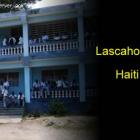 Lascahobas, Haiti
Lascahobas, Haiti 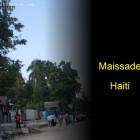 Maissade, Haiti
Maissade, Haiti 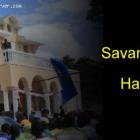 The Town of Savanette, Haiti
The Town of Savanette, Haiti 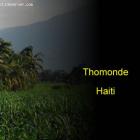 Thomonde, Haiti
Thomonde, Haiti 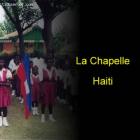 La Chapelle, Haiti
La Chapelle, Haiti